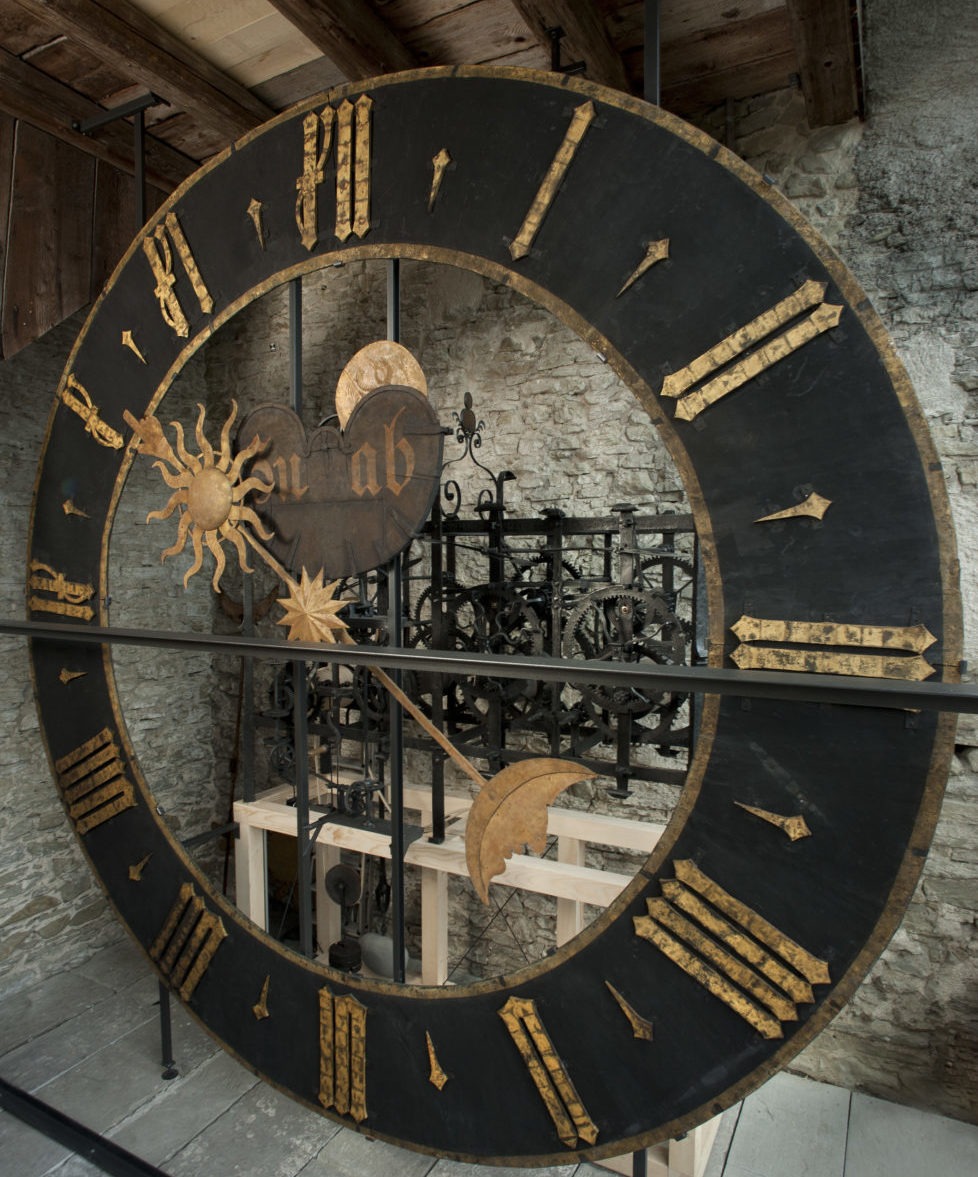
The Town-hall clock
The town-hall of Lucerne on the Kornmarkt was built between 1602 and 1606 by the Italian architect Anton Isenmann from the Prismell region and is valued as a masterpiece of late Renaissance style. The tower of the town-hall is older and was erected in the High Middle Ages later serving as a dungeon and finally housing the town-hall clock. Only little is known about the old town-hall clocks in general but already in 1408 we can suppose that there was a clock in the town-hall tower. In 1526 Hansen Luter, a clock-maker from Zurich, manufactured a new town-hall clock. The frame and the whole clock-work were forged by hand, the frame consisting of four corner-pillars which are connected with horizontal and vertical bands. The wheels of the clock-work and the striking work are placed behind one another. The clock-work consists of only two wheels, the weight wheel and the escapement wheel. The weight wheel turns once an hour and moves the hour wheel and the only hand of the clock. It also operates the striking work. In 1788/89 the big town-hall clock was extended with two movements: the quarter hour striking work and a second full hour striking work. At the same time the position of the wheels was turned by 90 degrees. After this reconstruction the town-hall clock was relocated to the cathedral in 1789 where it stayed until 1911. On the ground-floor of the exhibition you can see the original clock-face, the hand and the moon-phase of the clock; the anchor as well as the pendulum are reconstructions.









